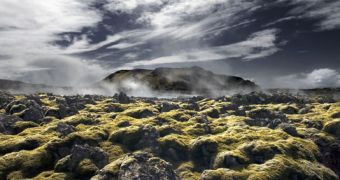When people hear about mass extinctions of the past, they immediately think dinosaurs and asteroids, but what they don't know is that the event that occurred about 65 million years ago (at the end of the Cretaceous Period), was not the first. In fact, before they even appeared, life came close to being obliterated, and that time there was no asteroid to blame. It was the planet itself, suggests a new study by Yukio Isozaki from the University of Tokyo in Japan.
Over 265 million years back, a uber-hot plume of material started to rise slowly from the depths of the Earth, reaching through the mantle towards the surface. This caused a convection in the planetary core, which, in turn, disturbed the magnetic field. The perturbations of the weakened magnetic field enabled cosmic radiation to breach in, breaking nitrogen into ions and forming large, thick cloud blankets that covered the Earth. "This would've caused severe cooling and a drop in sea level," allowing for giant ice sheets to form on the Pangaea (the supercontinent that broke apart to form our continents 180 million years ago), explained Isozaki, cited by Discovery.
Five million years later, the superplume finally reached the surface, exploding in the form of three successive supervolcanoes, in modern India, China and Norway. Although each of them alone was not powerful enough to do much harm, the combined aftermath of the three was devastating, further cooling the environment. Then, after ten more million years, the final blow arrived. "The effects of the superplume were just the first punch of extinction," Isozaki said. "Then came the knockout punch, the Permian-Triassic extinction."
The knockout punch consisted of the much bigger eruption of the larger Siberian Straps volcano, wreaking havoc on almost all life (90% of the species on the planet were destroyed). But, contrary to Isozaki's belief, Gregory Retallack from the University of Oregon is skeptical in that which concerns associating the same superplume with both punches. He believes life had recovered in the 10 million years after the first one. "We almost lost it there," he explains. "The late Permian looks good all over the world. You've got corals, healthy marine communities, and lots of fossil flora on land."

 14 DAY TRIAL //
14 DAY TRIAL //